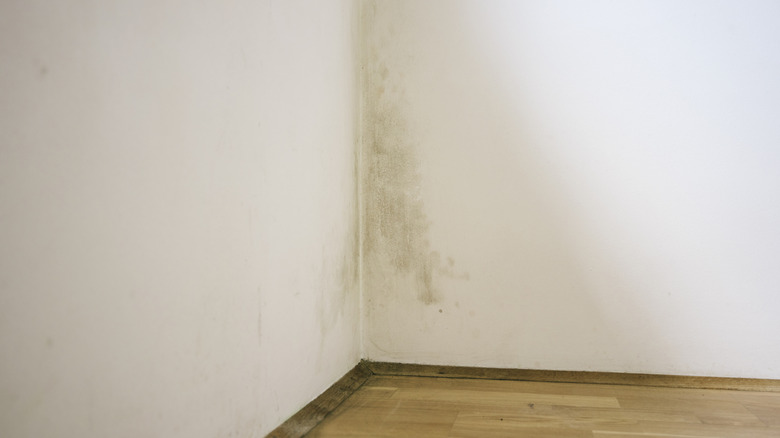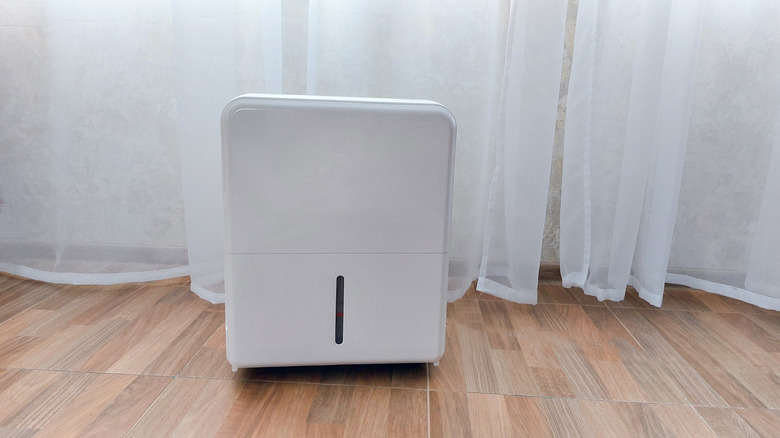Quick And Effective Solutions To Tackle Damp Walls After It Rains
We may receive a commission on purchases made from links.
Have you started noticing dark patches appearing on your walls after a rainstorm or wet, humid weather? These spots on walls often look like damp areas and are sometimes accompanied by the paint starting to bubble or warp. If the issue is left untreated, these spots can progress to unsightly brown or yellow areas with serious cracking on the surface. Don't panic if you've spotted some dark patches on your walls, there are solutions to tackle damp, as well as ways to prevent water damage altogether. Some of the best ways to deal with wet walls are to increase ventilation and use a dehumidifier to balance moisture levels.
Before you can find the best solution for your damp walls, it's important to understand the main causes of this issue. For example, there are two main structural problems that often plague buildings. These are called penetrating damp and rising damp, though they both have distinct differences. Essentially, penetrating damp is when excess water is able to pass through the exterior to the interior walls due to problems like a leak in the roof or clogged gutters. Rising damp stems from ground moisture that works its way through structural materials like brick and mortar. Both can cause damp patches to appear on interior walls and require attention to prevent mold from forming on the wet walls.
Easy solutions to combat wet walls
If you're ready to get rid of those ugly water stains on your walls, you'll need to combat the excess moisture caused by issues like penetrating and rising damp. Moisture buildup forming on interior walls and windows is one of the top signs there's a damp problem somewhere within your home, but how much moisture is too much? Grab a handy tool like the General Tools MMD4E Digital Moisture Meter and take some readings around the most suspicious areas. Anything under 10% is dry and safe. 20% and up and you'll need to work on finding a solution. One immediate way to help bring those moisture and humidity levels down is to open the doors and windows or add an exhaust fan to a window to boost air circulation.
Another solution you can implement is to use a dehumidifier in the rooms affected by dampness. Place the unit in an area of the room where it can maintain good airflow with minimal obstructions. You'll also want to make sure you choose a dehumidifier that's big enough for the square footage of the space it will be working in. For example, a 600-square-foot room might need anywhere from a 25-pint unit to a 40-pint unit, depending on the severity of the moisture problem.
Best prevention tips to avoid damp walls
If you've been watching out for signs of hidden water damage in your walls, you can breathe a sigh of relief knowing there are some prevention methods that can minimize the risks of this happening (or recurring). However, it's important to note that these prevention methods, and any solution you take against dampness in your home, will only work long-term if you address the structural source of the issue. Once that is handled, you can dive into not only repairing the damaged area but taking steps to prevent the problem in the future. A simple way to keep water from damaging your walls is to make sure all of your windows and any gaps around them are sealed. You can use a product like MOLD ARMOR 100% Silicone Mold Free Caulk & Sealant to address any areas of concern.
If you're unsure of how to find the source of your water issue, you can reach out to a water damage specialist to determine where the water is entering the wall. You should also know when to call a professional for mold damage, including finding moldy areas of over 10 square feet or noticing excessive damp odors in your home. The scent of mold sometimes presents as musty or can even smell downright rotten. If you're dealing with damp spots on your walls and the smell of mold, call a professional to find the best solution.


